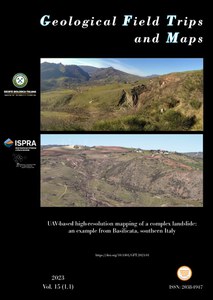UAV-based high-resolution mapping of a complex landslide: an example from Basilicata, southern Italy
This paper accompanies a UAV-based geological-geomorphological map (1:1,000 scale) of a complex landslide periodically re-activated, localized not far from the town of Potenza in Basilicata, southern Italy. A fixed-wings eBee drone equipped with a conventional digital RGB photocamera (senseFly S.O.D.A.) was used to collect airborne digital elevation models (DEMs), orthophotos, and density point clouds in 2014 and 2018. The two photogrammetric surveys helped us to quickly detect the features of the new mass movement episodes. Three Google Earth Pro orthophotos filled the lack of information of the years in between. Topographic contours of the landslides with their morphological scarps and geological data from the 2018 field survey were processed using free and open-source software QGIS 3.22.4. For graphic adjustment and the final layout, the main map was imported into Adobe Illustrator CC 2018 and CorelDraw and embedded into an A0 map frame. The geological-geomorphological map reports a detailed representation of the bedrock geological structures, the ancient landslide bodies now stabilized, and the recent landslides occurred from 2014 to 2018 as deduced by the multitemporal analysis. Geomorphic features and facies analysis allowed us to interpret as debris flows and mud flows the depositional processes responsible for the genesis of the landslide bodies reaching the thalweg of the Basento River.
DOI: https://doi.org/10.3301/GFT.2023.01

